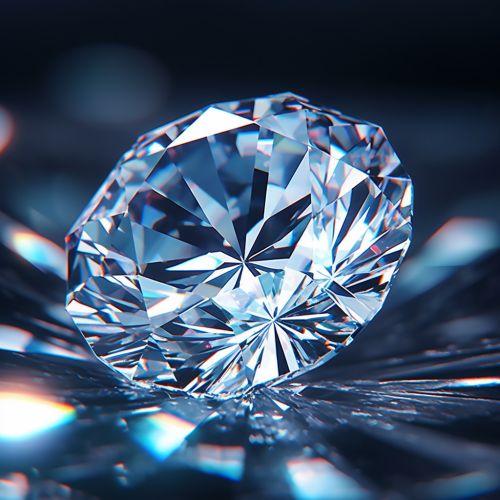Quantum Sensing with Diamond Nitrogen-Vacancy Centers
Introduction
Quantum sensing with diamond nitrogen-vacancy (NV) centers is a rapidly growing field within quantum physics and material science. This technology leverages the unique properties of NV centers in diamonds to measure magnetic fields, electric fields, temperature, and other physical quantities with unprecedented sensitivity and spatial resolution.


Background
Diamonds are made up of carbon atoms arranged in a crystal lattice. Occasionally, a nitrogen atom may replace a carbon atom in the lattice, and a neighboring carbon atom may be missing, creating a nitrogen-vacancy center. The NV center has an unpaired electron, which gives it a magnetic moment that can be manipulated and measured using quantum mechanical techniques.
Quantum Sensing
Quantum sensing is a technique that uses the principles of quantum mechanics to achieve highly sensitive measurements. In the case of diamond NV centers, the quantum state of the NV center's unpaired electron can be manipulated using microwave radiation and then read out optically. This allows for the measurement of the local magnetic field, electric field, temperature, and other quantities with high precision.
Applications
Quantum sensing with diamond NV centers has a wide range of potential applications. These include:
Magnetic Field Sensing
Diamond NV centers can be used to measure magnetic fields with high sensitivity and spatial resolution. This has potential applications in magnetometry, MRI, and the study of magnetic materials.
Electric Field Sensing
The quantum state of the NV center's unpaired electron is sensitive to electric fields, allowing for precise electric field measurements. This could be used in the development of new types of electronics and in the study of electric phenomena in biological systems.
Temperature Sensing
Diamond NV centers can also be used to measure temperature with high precision. This could be used in the study of thermal properties of materials and in the development of new types of thermometry.
Other Applications
Other potential applications include the study of quantum computing, quantum communication, and quantum cryptography. The unique properties of diamond NV centers could also be used in the development of new types of sensors and measurement devices.
Challenges and Future Directions
While quantum sensing with diamond NV centers holds great promise, there are also significant challenges to be overcome. These include improving the sensitivity and spatial resolution of the measurements, understanding and mitigating the effects of noise, and developing practical methods for creating and manipulating NV centers in diamonds.
Despite these challenges, the field of quantum sensing with diamond NV centers is rapidly advancing, and there is much optimism about its potential impact on science and technology.
